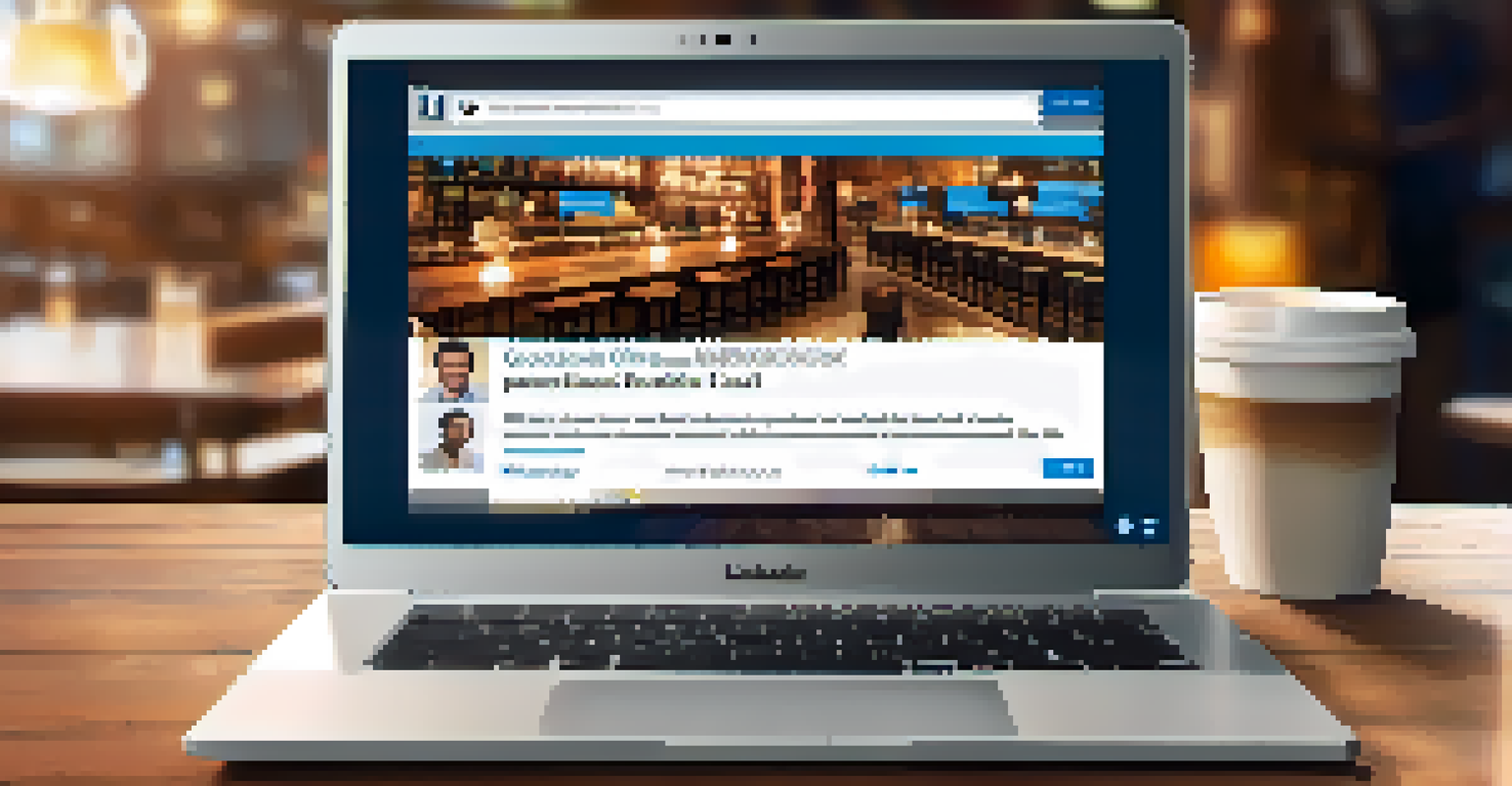Crafting the Perfect LinkedIn Profile for Job Seekers

Understanding the Importance of Your LinkedIn Profile
In today's job market, your LinkedIn profile serves as your digital resume. It’s often the first impression recruiters get of you, so making it shine is essential. A well-crafted profile not only showcases your skills but also tells your professional story.
Your network is your net worth.
Think of LinkedIn as your online billboard—if it’s attractive and informative, it draws people in. Your profile can set you apart in a sea of candidates, highlighting your unique experiences and qualifications. The right profile can turn potential employers into interested recruiters.
Moreover, having a strong LinkedIn presence can show your commitment to professional growth. It demonstrates that you’re not just looking for a job but are invested in your career journey. This can resonate well with hiring managers who value proactive candidates.
Choosing the Right Profile Picture
Your profile picture is like a handshake—it’s your first chance to make a positive impression. Use a high-quality, professional-looking headshot that reflects your personality and the industry you're in. A friendly smile can make you seem approachable, which is key in networking.

Avoid using casual photos or group pictures, as they can confuse viewers about who you are. Instead, opt for a simple background that keeps the focus on you. Remember, this is not just about looking good; it’s about looking professional and trustworthy.
Your LinkedIn Profile Matters
A strong LinkedIn profile acts as a digital resume, showcasing your skills and professional journey to attract recruiters.
Lastly, ensure your attire matches the roles you’re targeting. For instance, if you're aiming for a corporate position, a suit might be appropriate, while a more casual outfit could work for creative fields. Your profile picture should align with the impression you want to convey.
Crafting a Compelling Headline
Your LinkedIn headline is one of the first things people see, so make it count! Instead of just listing your job title, use this space to showcase your expertise and what you bring to the table. For example, instead of 'Marketing Manager,' try 'Data-Driven Marketing Manager Specializing in Digital Campaigns.'
The only way to do great work is to love what you do.
This approach not only highlights your current role but also emphasizes your skills and specialties. It helps you stand out to recruiters searching for specific expertise. Think of your headline as a mini elevator pitch that conveys your professional identity instantly.
Additionally, include keywords relevant to your desired job. This boosts your visibility in LinkedIn searches, making it easier for recruiters to find you. Tailoring your headline can open doors to opportunities you may not have considered.
Writing an Engaging Summary Section
Your summary is your chance to tell your story—make it engaging and authentic. Start with a hook that grabs attention, then outline your career journey, key achievements, and what you're passionate about. This is where you can let your personality shine through.
Use a conversational tone that invites readers in, as if you're having a chat over coffee. Avoid jargon unless absolutely necessary, and if you do use it, explain it. This makes your profile more relatable and easier to digest for a broader audience.
Engage with Your Network
Building connections and engaging with content on LinkedIn helps you establish relationships and positions you as a thought leader.
Don’t forget to include a call to action at the end. Whether it’s inviting connections or expressing openness to job opportunities, this gives readers a clear next step. Your summary should leave them wanting to learn more about you.
Showcasing Your Work Experience Effectively
When detailing your work experience, think quality over quantity. Focus on highlighting roles that are relevant to the job you're seeking, and describe your responsibilities and achievements using action verbs. This not only makes your experience compelling but also paints a clear picture of your capabilities.
Utilize bullet points for clarity, making it easier for recruiters to skim through your experience. For instance, instead of saying 'Responsible for managing a team,' say 'Led a team of five to achieve a 30% increase in sales.' This shows impact and results, which are what employers are looking for.
Additionally, don’t hesitate to add multimedia elements such as presentations or project links. These can serve as tangible proof of your accomplishments and skills, making your profile more visually appealing and informative.
Highlighting Skills and Endorsements
Skills are a crucial part of your LinkedIn profile because they help recruiters understand your strengths at a glance. Be strategic about which skills you list—focus on those that align with your career goals. Aim for a mix of hard skills, like 'Data Analysis,' and soft skills, like 'Team Leadership.'
Encourage connections to endorse your skills, as this adds credibility to your profile. Endorsements act like mini-references from your network, validating your expertise. Don’t be afraid to endorse others in return; it’s a great way to build relationships.
Craft a Compelling Summary
An engaging summary tells your professional story, highlights achievements, and invites readers to connect or explore further.
Also, keep your skills updated as your career evolves. Regularly revisiting this section ensures that your profile remains relevant and reflects your current capabilities. This not only helps you appear more active but also showcases your commitment to continuous learning.
Building a Network and Engaging with Content
Networking is a vital component of LinkedIn, so actively connect with industry professionals and peers. Don’t hesitate to send personalized connection requests, mentioning common interests or goals. Building a strong network can lead to job opportunities and valuable insights.
Engaging with content is equally important. Share articles, comment on posts, and join discussions relevant to your field. This not only keeps you informed but also positions you as a thought leader in your area of expertise.

Lastly, consider publishing your own articles or posts. Sharing your knowledge and experiences can enhance your visibility and establish your brand. Remember, LinkedIn is not just a platform for job searching; it's a community for professional growth.